Optics Lab, discover the new Labinsight stop
(Pubbl. 18/01/2023)With the fifth stop of the Labinsight series, we enter the Optics laboratory located in the new headquarters in Gatteo.
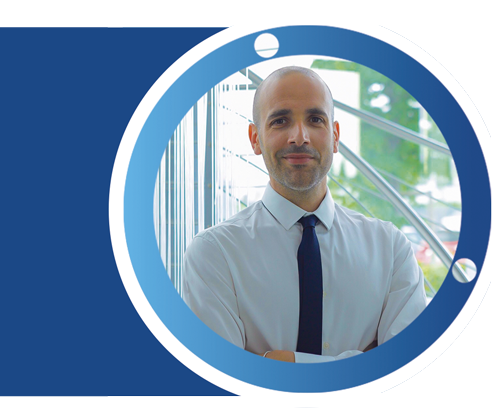
Our guide is Andrea Cucchi, the section manager, whom we have already met at the first stop of our series.
Andrea introduces the laboratory by specifying that the Optics section designs and implements state-of-the-art tests in various application fields.
Read our interview and discover the laboratory in detail.
What are the sectors in which the laboratory operates?
The laboratory operates mainly in three areas:
1. Photometric and colourimetric characterisation of light sources and road signs, i.e. the study of devices designed to communicate a message or signal a danger through emitted and/or reflected light. The primary normative references adopted are:
Tests are also carried out according to IALA standards for maritime signs and EN 13032 for luminaires in general.
The constant innovations in the field of lighting technology, which allow the development of ever more energy-efficient light sources and the rapid evolution of electronic devices, make this sector of great interest.
2. Optical characterisation of materials to investigate their surface behaviour under incident radiation. This is proceeding in parallel with the search for increasingly high-performance materials that specifically target the energy efficiency of buildings and weather resistance. This includes tests for the determination of the following:
3. In situ tests for measuring daylight factor (D.M. 05/07/1975), lighting levels in workplaces (D.Lgs. 81/2008, EN 12464) and the optical performance of horizontal (EN 1436) and vertical (EN 12899) road markings.
According to which authorisations/notifications are the tests carried out?
According to Regulation (EU) 305/2011 (CPR), the laboratory is notified for initial type testing for CE marking. All experimental activity follows the criteria suggested by the central international standards bodies such as UNI, EN, ISO, DIN, NF, BSI, and ASTM.
We are also going through the ACCREDIA accreditation process for “CPR testing”.
Let's go into more detail. What equipment do you use, and what tests do you perform?
In recent years, the Institute has invested heavily in the implementation of the instrumentation of the Optics laboratory, equipping itself with a fleet of instruments capable of performing a wide range of tests for the most diverse sectors (construction, road, rail, automotive, textile, and aerospace).
The study of the optical properties of materials is performed through a UV-VIS-NIR dual-beam spectrophotometer (customised with a 100 mm integrating sphere) and an FT-IR spectrometer (equipped with an accessory for specular reflection and a gold integrating sphere for diffuse reflection), which together allow transmission and reflection analysis of the 250 nm – 50 μm spectral range. In addition, we also have an emissometer for measuring thermal emissivity in reference to ASTM C-1371.
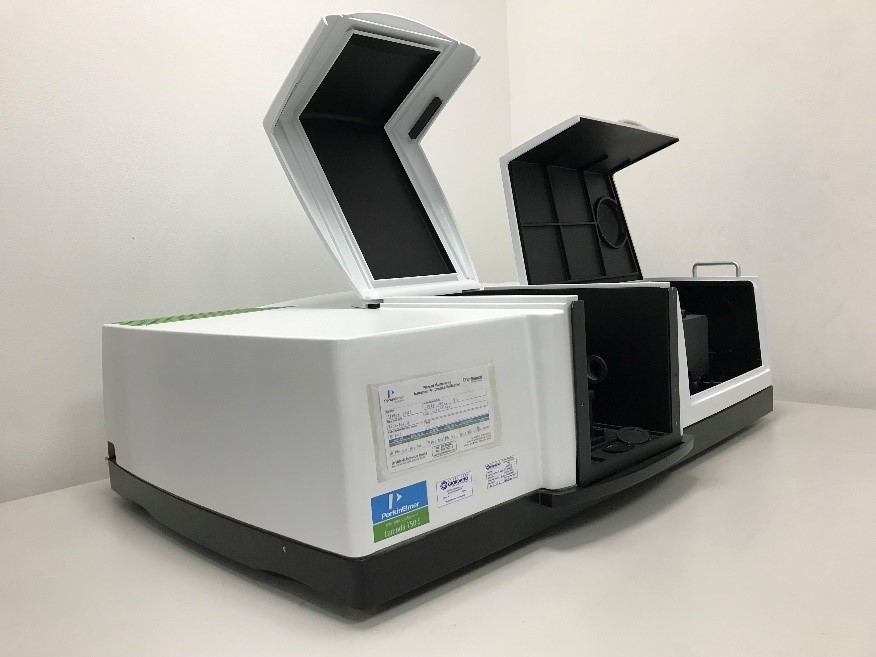
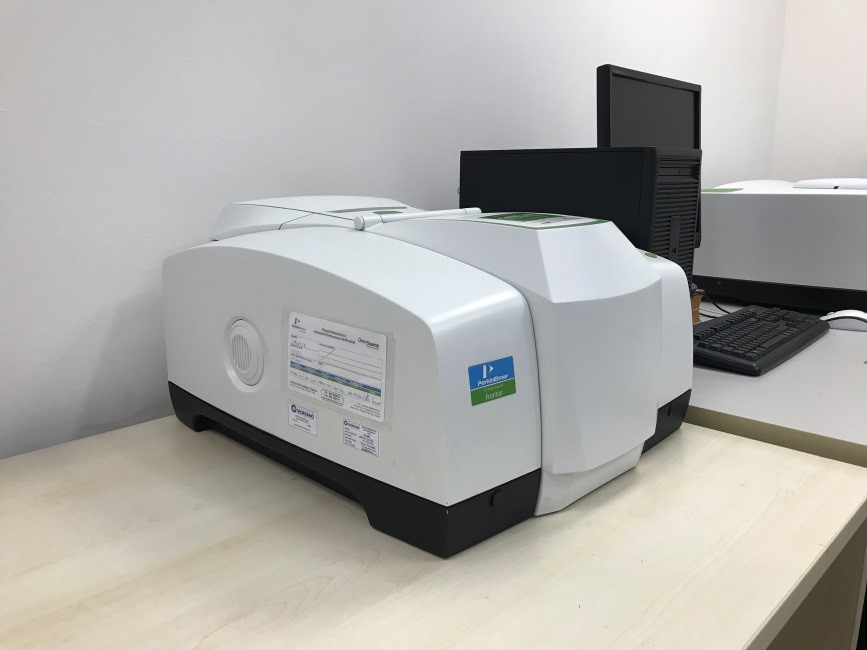
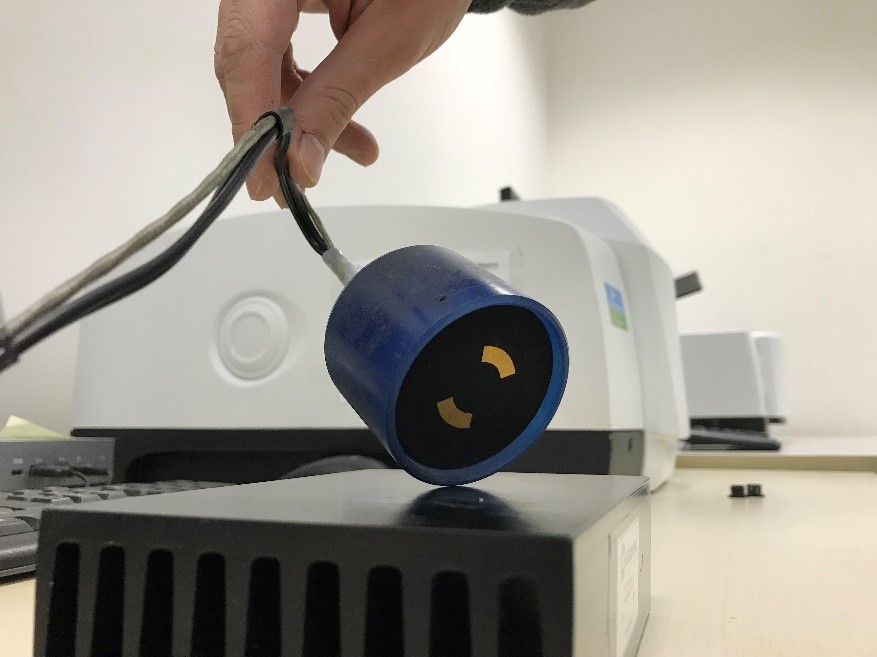
Fig. 1 UV-VIS-NIR spectrophotometer - Fig. 2 FT-IR Spectrometer - Fig. 3 3 Emissometer
For photometric and colourimetric tests, we use a luminance meter and a spectroradiometer interfaced with appropriate probes that allow data acquisition in the visible and near-infrared spectral range.
To test the angular variability of the source-observer system, the sample is positioned and rotated to recreate all the test geometries required by the standards using a goniophotometer, which allows the process to be automated with considerable time savings and total reliability of the acquired data.
We have a large (2 m) integrating sphere for luminaire tests and transmission/reflection tests on specific types of products. Finally, we have instrumentation for on-site testing, such as retroreflectometers, luxmeters and a portable spectrophotometer.
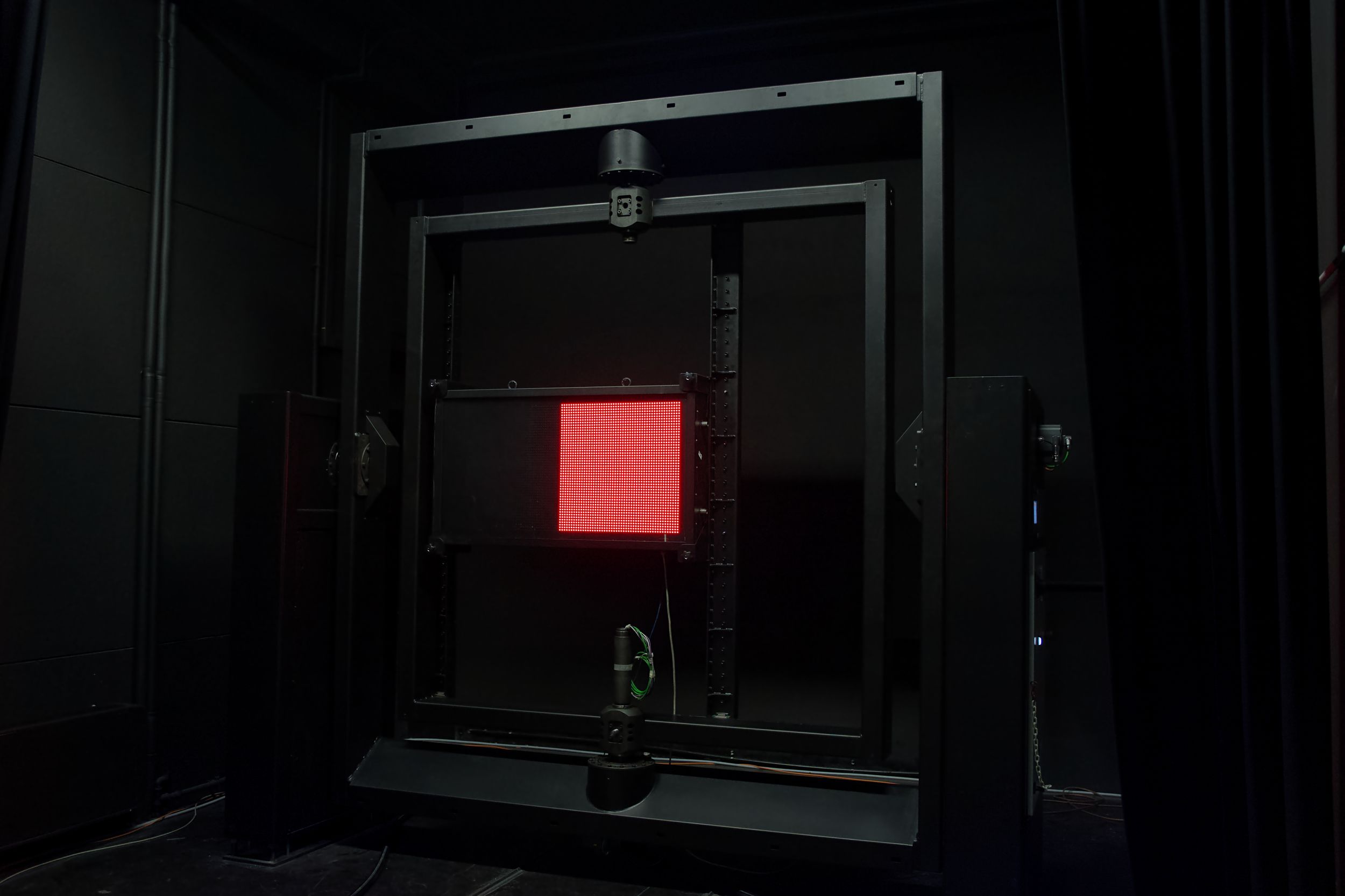
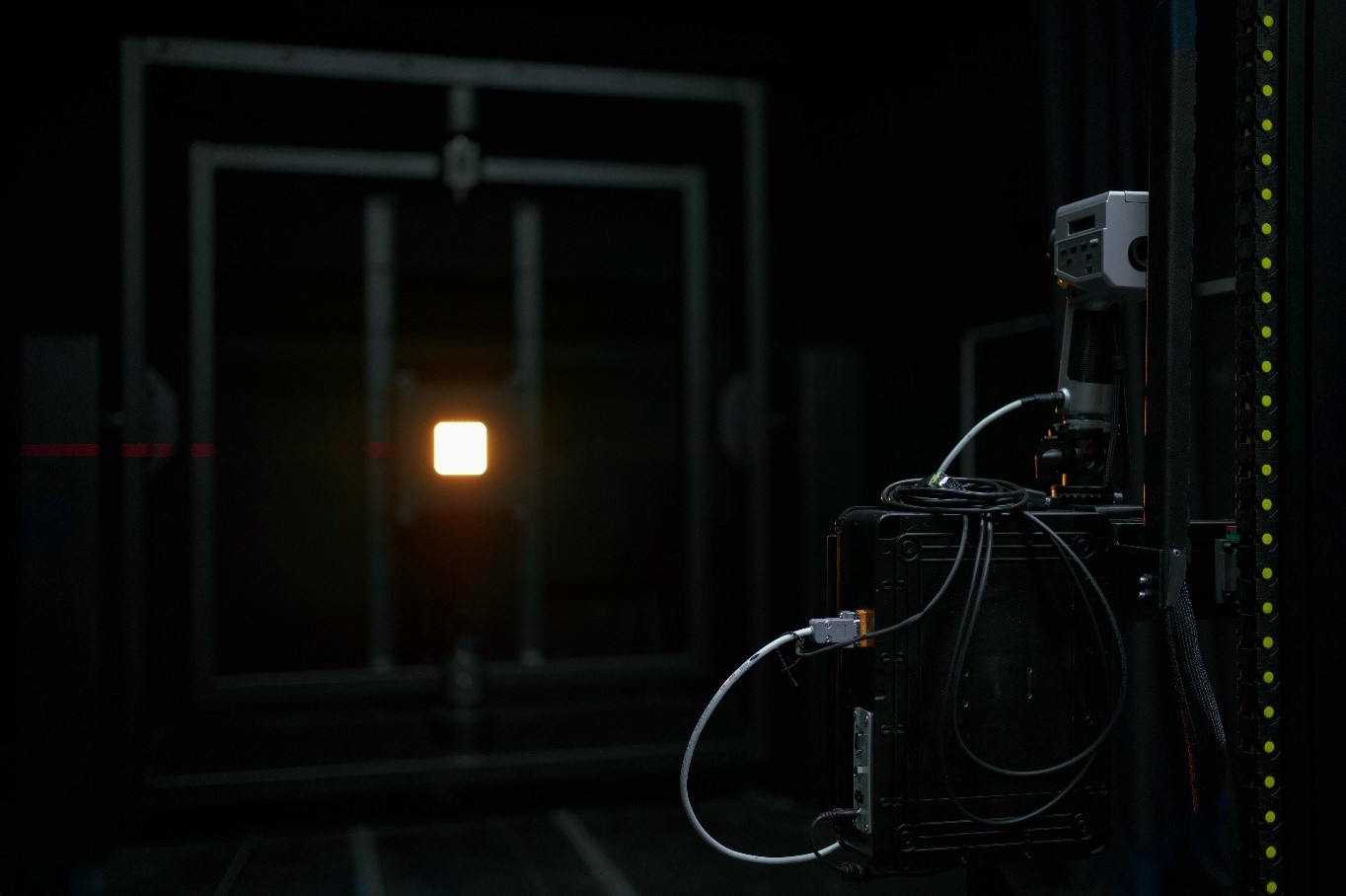
.jpg)
Fig. 4 Goniophotometer - Fig. 5 Luminance meter - Fig. 6 Integral sphere
Optics is a dynamic laboratory whose technical skills and equipment are growing, as is the number of tests we can perform.
Watch the video of the Goniophotometer in action
For more details on the tests, we can perform See the special page

Our guide is Andrea Cucchi, the section manager, whom we have already met at the first stop of our series.
Andrea introduces the laboratory by specifying that the Optics section designs and implements state-of-the-art tests in various application fields.
Read our interview and discover the laboratory in detail.
What are the sectors in which the laboratory operates?
The laboratory operates mainly in three areas:
1. Photometric and colourimetric characterisation of light sources and road signs, i.e. the study of devices designed to communicate a message or signal a danger through emitted and/or reflected light. The primary normative references adopted are:
- EN 12966-1 for variable message signs;
- EN 12899 for permanent vertical road signs;
- EN 12352 for warning and safety light devices;
- EN 12368 for traffic lights.
The constant innovations in the field of lighting technology, which allow the development of ever more energy-efficient light sources and the rapid evolution of electronic devices, make this sector of great interest.
2. Optical characterisation of materials to investigate their surface behaviour under incident radiation. This is proceeding in parallel with the search for increasingly high-performance materials that specifically target the energy efficiency of buildings and weather resistance. This includes tests for the determination of the following:
- Luminous and thermal transmittance characteristics of glazing and more (EN 410, EN 673, EN 12898);
- SRI Solar Reflection Index (for LEED certification);
- Thermal and visual comfort of fabrics, sunscreens and shutters (EN 14501); this is a highly topical test since the Gtot value is the reference for obtaining tax deductions with ENEA practice;
- Optical characteristics of railway windscreens (EN 15152).
According to which authorisations/notifications are the tests carried out?
According to Regulation (EU) 305/2011 (CPR), the laboratory is notified for initial type testing for CE marking. All experimental activity follows the criteria suggested by the central international standards bodies such as UNI, EN, ISO, DIN, NF, BSI, and ASTM.
We are also going through the ACCREDIA accreditation process for “CPR testing”.
Let's go into more detail. What equipment do you use, and what tests do you perform?
In recent years, the Institute has invested heavily in the implementation of the instrumentation of the Optics laboratory, equipping itself with a fleet of instruments capable of performing a wide range of tests for the most diverse sectors (construction, road, rail, automotive, textile, and aerospace).
The study of the optical properties of materials is performed through a UV-VIS-NIR dual-beam spectrophotometer (customised with a 100 mm integrating sphere) and an FT-IR spectrometer (equipped with an accessory for specular reflection and a gold integrating sphere for diffuse reflection), which together allow transmission and reflection analysis of the 250 nm – 50 μm spectral range. In addition, we also have an emissometer for measuring thermal emissivity in reference to ASTM C-1371.



Fig. 1 UV-VIS-NIR spectrophotometer - Fig. 2 FT-IR Spectrometer - Fig. 3 3 Emissometer
For photometric and colourimetric tests, we use a luminance meter and a spectroradiometer interfaced with appropriate probes that allow data acquisition in the visible and near-infrared spectral range.
To test the angular variability of the source-observer system, the sample is positioned and rotated to recreate all the test geometries required by the standards using a goniophotometer, which allows the process to be automated with considerable time savings and total reliability of the acquired data.
We have a large (2 m) integrating sphere for luminaire tests and transmission/reflection tests on specific types of products. Finally, we have instrumentation for on-site testing, such as retroreflectometers, luxmeters and a portable spectrophotometer.


.jpg)
Fig. 4 Goniophotometer - Fig. 5 Luminance meter - Fig. 6 Integral sphere
Optics is a dynamic laboratory whose technical skills and equipment are growing, as is the number of tests we can perform.
Watch the video of the Goniophotometer in action
For more details on the tests, we can perform See the special page

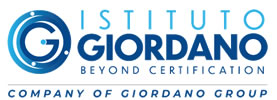













 Do you need more information about our services?
Do you need more information about our services?